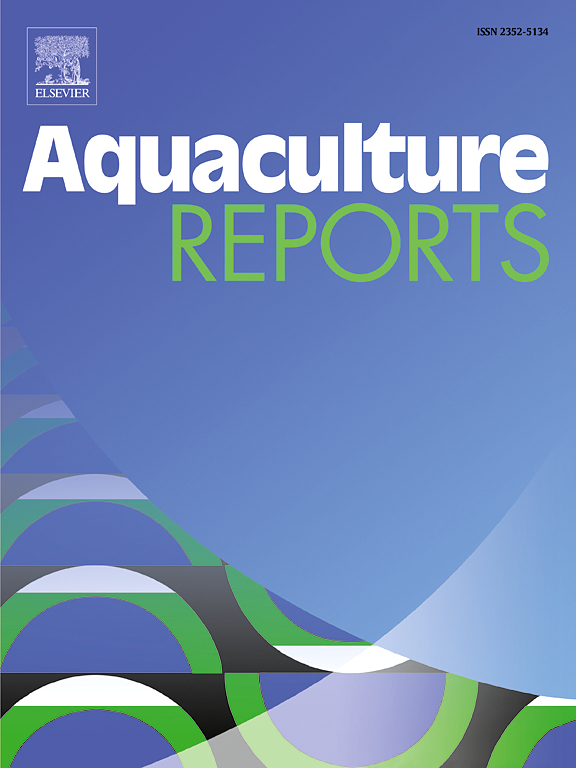Impact of dietary protein levels on growth, immune response, digestibility, intestinal microbiota, and transcriptome in Litopenaeus vannamei fed cottonseed protein concentrate
IF 3.2
2区 农林科学
Q1 FISHERIES
引用次数: 0
Abstract
This study investigated the effects of dietary protein levels on Litopenaeus vannamei using cottonseed protein concentrate (CPC) as the primary protein source. L. vannamei (initial body weight = 0.42 ± 0.01 g) were fed diets containing 32 % (CPC32), 36 % (CPC36), 40 % (CPC40), 44 % (CPC44), and 48 % (CPC48) protein for 8 weeks. The CPC40 group exhibited the highest final body weight (FBW), weight gain rate (WGR), specific growth rate (SGR), and the lowest feed conversion ratio (FCR). Analysis of hepatopancreatic tissues revealed that activities of superoxide dismutase (SOD), peroxidase (PO), lysozyme (LZM), and catalase (CAT) were significantly reduced, while malondialdehyde (MDA) levels increased in the CPC48 group compared to the CPC40 group. The activities of trypsin and amylase were significantly decreased in the CPC32 and CPC48 groups compared to CPC40, with a notable decrease in trypsin activity also observed in the CPC36 group. Intestinal microbiota analysis showed significant shifts in the CPC40 group, including an increased Bacteroidetes to Proteobacteria ratio and higher relative abundances of Verrucomicrobia, Flavobacteriaceae, Demequinaceae, and Photobacterium. Transcriptomic analysis identified significant signaling pathways affected by dietary treatments, notably the IL-17 signaling pathway, endoplasmic reticulum protein processing, and cholesterol metabolism. Key genes such as HSP90B1 and HSP90AA1 were prominently involved in various pathways, including IL-17 signaling, thyroid hormone synthesis, fluid shear stress, prion disease, and atherosclerosis. Correlation analysis indicated a significant positive relationship between HSP90B1 gene expression and Photobacterium abundance. Furthermore, gene expression levels of HSP90B1 and HSP90AA1 in hemocytes were significantly elevated in the CPC32 and CPC48 groups compared to CPC40. In conclusion, the CPC40 diet may enhance immune pathways in L. vannamei through the synergistic modulation of the HSP90B1 gene and Photobacterium, leading to reduced intestinal pathogenic bacteria, improved immunity and digestive efficiency, ultimately promoting growth performance.
求助全文
约1分钟内获得全文
求助全文
来源期刊

Aquaculture Reports
Agricultural and Biological Sciences-Animal Science and Zoology
CiteScore
5.90
自引率
8.10%
发文量
469
审稿时长
77 days
期刊介绍:
Aquaculture Reports will publish original research papers and reviews documenting outstanding science with a regional context and focus, answering the need for high quality information on novel species, systems and regions in emerging areas of aquaculture research and development, such as integrated multi-trophic aquaculture, urban aquaculture, ornamental, unfed aquaculture, offshore aquaculture and others. Papers having industry research as priority and encompassing product development research or current industry practice are encouraged.
 求助内容:
求助内容: 应助结果提醒方式:
应助结果提醒方式:


